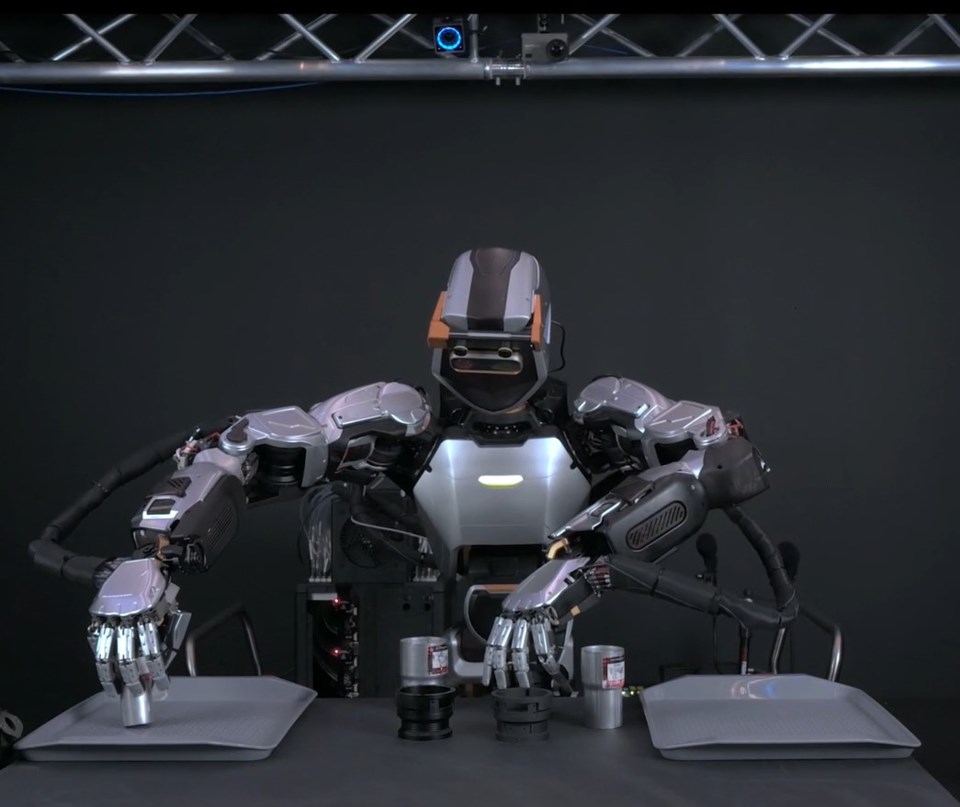Professional-services giant Accenture today said it has invested an undisclosed amount of money in Vancouver-based Sanctuary AI, which aims to make what it calls "the world's first human-like intelligence in general purpose robots."
Sanctuary AI has a sixth-generation robot, which it calls Phoenix, and which was listed as one of Time Magazine's 200 best inventions of 2023. Phoenix last year also ranked as one of the top 15 start-ups in Canada, according to LinkedIn.
Its drive to improve Phoenix and sell it to clients to use to perform tasks quickly, safely and effectively comes as other ventures compete in this burgeoning niche.
Vancouver entrepreneur Roger Hardy told BIV earlier this month that he had invested in the humanoid robot venture Figure AI. That start-up has many ultra-rich technology investors.
“I put over US$3 million into this deal,” Hardy said.
Bloomberg first reported that Amazon.com founder Jeff Bezos and large technology companies, such as Nvidia (Nasdaq:NVDA), had pumped approximately US$675 million into Figure AI in a funding round that valued the company at about US$2 billion.
Others financing Figure AI include ChatGPT-maker OpenAI, its main investor, Microsoft Corp. (Nasdaq:MSFT), LG Innotek, Parkway Venture Capital and Align Ventures.
Other technology titans, such as Tesla Inc. (Nasdaq:TSLA) co-founder and CEO Elon Musk, have been developing humanoid robots. Tesla has what it calls its Tesla Optimus lab, which is developing robots named Optimus.
“What we’re aiming for is for the humanoid robots to do jobs that people don’t voluntarily want to do,” Musk told Massachusetts Institute of Technology research scientist Lex Fridman in a podcast in 2021.
“If it’s dangerous, boring or has potential for repetitive stress injuries – that kind of thing – then that’s really where humanoid robots would add the most value."
Sancutary AI's Phoenix stands five feet seven inches tall, weighs 155 lbs. and has hands that have dexterity similar to that of humans. Sanctuary AI powers its robots via an artificial intelligence (AI) control system that it calls Carbon, which the company said "mimics subsystems found in the human brain, such as memory, sight, sound and touch, and translates natural language into action in the real world."
The result is that its Phoenix robots can perform a wide variety of tasks quickly, safely and effectively, the company added.
“Robots with human-like intelligence will completely transform the workforce of the future," said Geordie Rose, Sanctuary AI's CEO. "By combining Accenture’s expertise in disruptive technology with Sanctuary AI’s industry-leading robotics, we can help some of the biggest companies in the world manage this change and provide the best solutions for its clients.”
The Canadian government said in November 2022 that its Strategic Innovation Fund would provide $30 million to Sanctuary AI.
Sanctuary AI closed a Series A funding round worth $75.5 million earlier in 2022.
Joe Lui, Accenture’s global advanced automation and robotics lead, said he sees "huge potential for their robots in post and parcel, manufacturing, retail and logistics warehousing operations, where they could complement and collaborate with human workers and automate tasks that traditional robotics can’t."
A little more than a year ago, Sanctuary AI deployed its first humanoid general-purpose robot commercially through a partnership with Canadian Tire Corp. (TSX:CTC.A) for use in its Mark's retail chain.
At a Mark’s store in Langley, Phoenix has performed more than 100 tasks, including choosing and packing merchandise. It also cleans, tags, labels and folds items with its robotic hands, Sanctuary AI said.
The drive to create humanoid robots follows the trend of simply having robots that reduce the need for human labour.
Diners at Richmond’s Happy Lamb Hot Pot restaurant, for example, have long been able to lift their meals from a non-humanoid robot and place them on their table. The robot tends to wait about 10 seconds before its sensor determines that it is time to return to the kitchen.
Happy Lamb Hot Pot in mid-2021 became the first restaurant in the province to start using GreenCo Robots machines. Dozens of other B.C. restaurants then followed suit, GreenCo’s owner Liang Yu told BIV in 2022.



